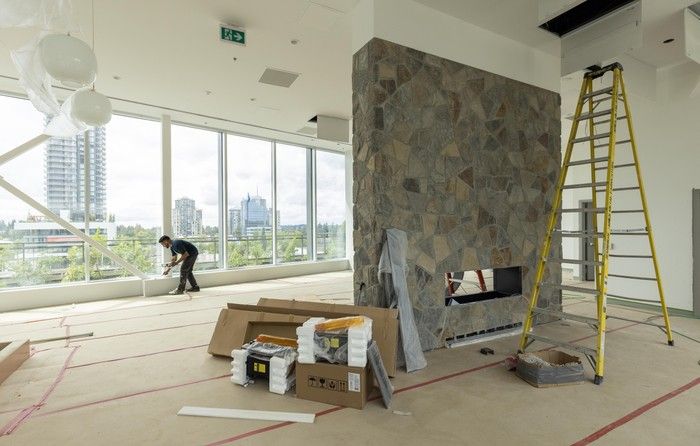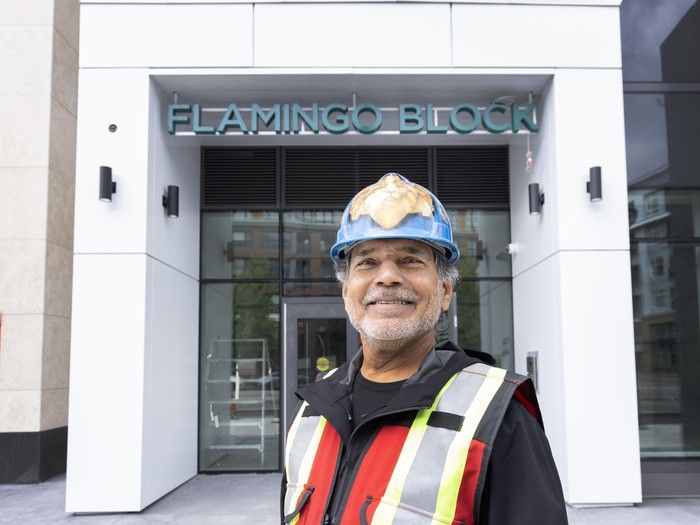
For decades, a small area of Surrey’s Whalley neighbourhood has had a sketchy reputation, known as a place for fights, stabbings and frequent calls to police.
The Flamingo Hotel housed The Byrd pub, one of the last stripper bars in the Lower Mainland, complete with brass poles, a stage created in the ’70s, and pink “Live Nude Girls” signage. It got international notoriety in 1985 for hosting a “dwarf-tossing” contest and was also the last place at least two people were seen before they were murdered.
Vancouver drug dealer Roy Eldon Alle was found in 1993 in a ditch in Whalley with a bullet in his head and a yellow rope tied around his neck. Police found his jeep parked at the hotel. Four years later, the body of Norma Jane Cowley, 31, was found on the front lawn of a home on 108th Avenue, a few hours after she’d left the lounge.
Today, the area, located in the hub of Whalley, just off the busy King George Boulevard and 108th Avenue, has been completely transformed. The first of three highrise residential towers is set to open for residents in the coming weeks. Called Flamingo One, the sold-out 35-storey building — adorned with a pink flamingo on one side — features 375 units, ranging from studios to two-bedroom suites. Flamingo Two will be 37 storeys and Flamingo Three will be 46 storeys.
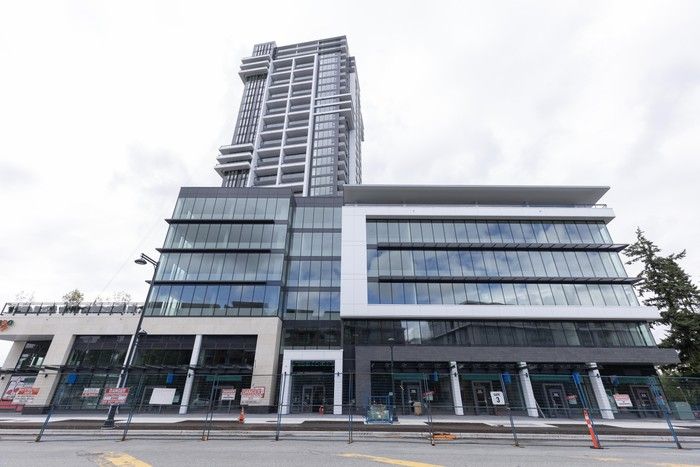
A six-storey commercial and work space, called Flamingo Block, will complete the vision to turn the area into a mixed-use district for living, working and playing. Completion of the entire project, including the Whalley Station tower of condos and commercial space, is scheduled for 2027.
The project’s developer, Tien Sher Group, is marketing the area as “Canada’s first 15-minute city,” an urban planning concept that dictates all key amenities should be within a 15-minute walk, cycle or transit ride.
Residents won’t have to venture far to access a variety of restaurants, grocery stores, a recreation centre, and one of the city’s most popular outdoor spaces, Holland Park. The park sits across the street from Central City Shopping Centre, which also houses Simon Fraser University’s Surrey campus. The nearest SkyTrain station is about an 11-minute walk away, an elementary school 10 minutes away, and city hall about 15 minutes.
“I didn’t want to do just one building at a time, it had to be a community. So we started building a community and planning in that way. … I don’t build condos, I build communities,” said Charan Sethi, Tien Sher’s president.
Fifteen-minute cities are a concept most people are receptive to in Surrey, according to Meghan Winters, an SFU researcher in the faculty of health sciences who studied the topic and its feasibility in Surrey.
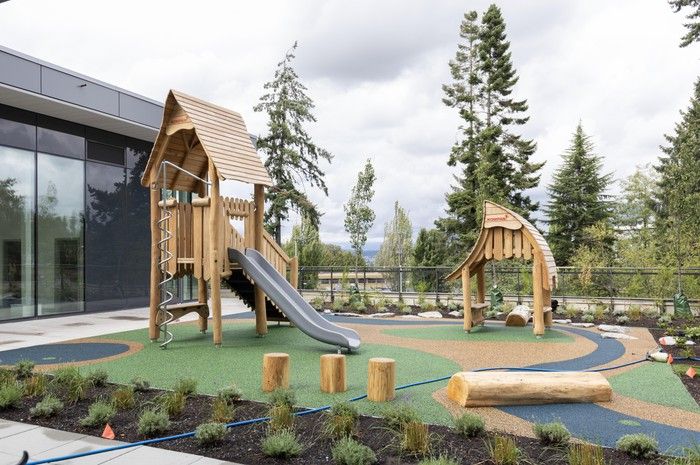
Many newcomers to Surrey and seniors rely on walking or public transit as their primary mode of travel already, she found, so increasing the viability is a welcome change.
“Surrey is different than Vancouver with the downtown core that’s been built up for some time. It was interesting to look at 15-minute concepts in these rapidly developing kinds of settings, so Surrey would be one example,” she said.
Winters agreed with Sethi that Whalley is a good testing ground for this concept, since it is already rich with offerings people enjoy. But access to amenities isn’t the only thing people are looking for, said Winters, who conducted the study alongside research manager Aman Chandi and student researcher Aayush Sharma.
Investing in adequate street lighting, having benches on sidewalks, water fountains and public washrooms can help create that safe environment to encourage and facilitate walking and biking, Winters said.
“Really facilitating the pedestrian experience isn’t something you can overlook. … I would really like to see developers, as they’re building up towers in communities, making sure they’re doing investments in the public realm. If we’re not doing our part to design cities so people don’t need to rely on cars, it’s also going to bring in motor vehicle traffic at the same time.”
There are some limitations to 15-minute city concepts, Winters said. Many people in Surrey already live in areas that could be considered to fit this model but don’t check all the boxes, she said.
One of the gaps her research team found was closeness to their preferred places of worship, which many residents consider their community centres. They may live close to a religious facility or grocery store or medical office, but “I can’t tell you it’s your temple that’s nearby you, I can’t say it’s your doctor that’s within walking distance,” she said.
“Just because it’s there doesn’t necessarily mean it meets your needs.”
Many study participants shared they did not use all amenities around them. Some people travelled to Newton for its ethnic grocery stores and settlement services, regardless of where they live in Surrey.
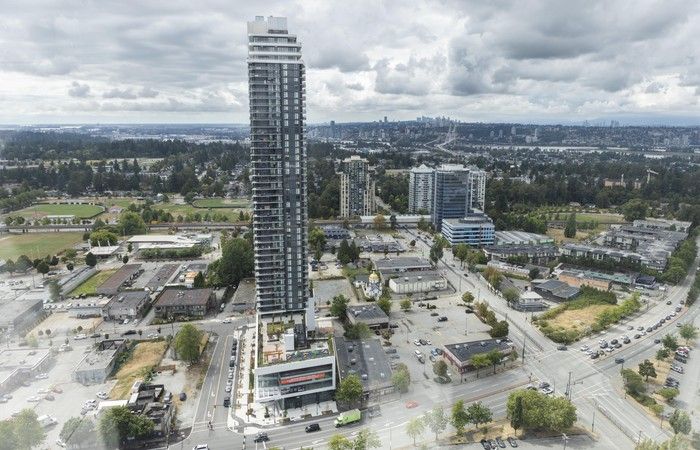
The study found families with children, or households identified as having core housing needs — meaning their homes are not affordable to them, need major repairs or do not have enough bedrooms for each person living there — were least likely to be living in a 15-minute neighbourhood.
Some drawbacks identified by Surrey residents in the study were overcrowding that can come with densifying areas, a fear of gentrification pushing current residents and small businesses out and neighbourhoods becoming “hubs for elites or investors,” and rent hikes.
Sethi maintains his development is intended “for everyone.”
“I don’t want to cater to only older people or only young people. There’s not one segment I wanted to cater to. We wanted to build a community that’s like a neighbourhood with children around,” he said.
Creating safe communities, he added, is one of his goals.
“When everything is in walking distance, when there’s a lot more people outside on the streets, it feels safer.”
According to an online listing, Flamingo One’s studio apartments start at $299,900 while two-bedrooms in the area go for $639,900 to start.
